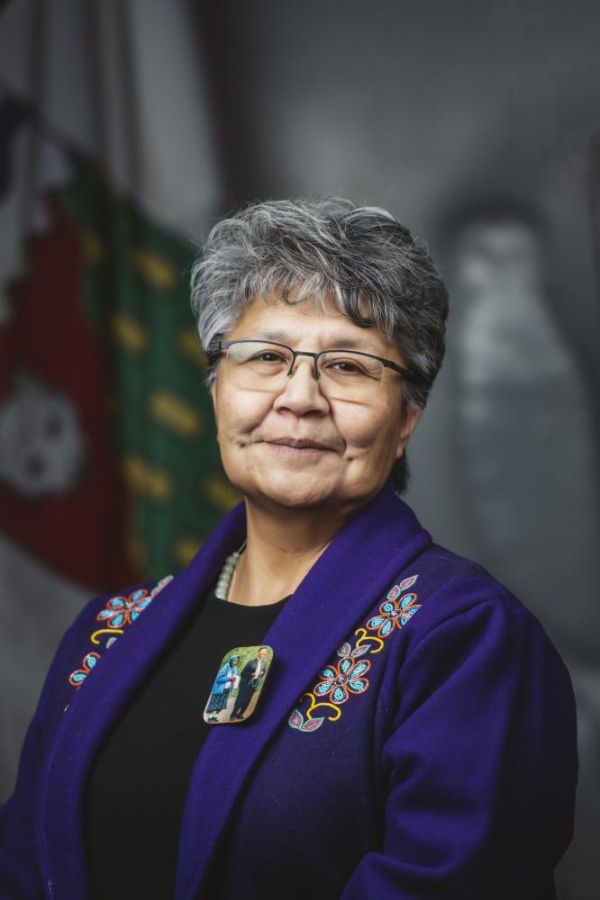Debates of May 26, 2022 (day 112)
Oral Question 1087-19(2): Climate Change

Thank you, Mr. Speaker. Right now about half of our climate change reduction targets in the 2030 Energy Strategy and our climate strategic framework are dependent on us building the Taltson Hydro Expansion. And I am looking forward to the department releasing the business case on that sometime in the near future.
But my understanding is, you know, in order for that to happen, we need about $750 million from the feds; we need about $250 million of our own money; we need an increase in our debt ceiling; we need three new mines to exist around the lake; we need the support of Indigenous governments.
And, you know, if all of those things line up, we might just build Taltson in time for 2030. That's a pretty tight regulatory turnaround and construction timeline to meet our energy targets. I actually hope all of those things come together in the next eight years here, Mr. Speaker.
But my question is considering this is about half of our current targets for reductions, what is the plan if we don't build Taltson? Thank you, Mr. Speaker.
Thank you, Member for Yellowknife North. Minister responsible for Infrastructure.
Thank you, Mr. Speaker. Advancing the Taltson Hydro Expansion Project remains a priority of this government, and we will continue to work to advance this transformative project transformative sorry, project with our Indigenous partners. This project has significant potential to help stabilize the cost of energy, grow our economy, and reduce the reduce industrial and transportation sector emissions.
There is no single project other than this Taltson that can have the same level of impact in this regard. It is a key component of our vision to reduce our dependence on diesel and transition to lower carbon economy.
The role that a project such as the Taltson play in our future ability to meet territorial emissions targets is dependent on when the project comes online.
As we move forward with renewed action plans under the 2030 Energy Strategy, our actions will be adjusted as needed to reflect the timing of when larger projects such as the Taltson comes online. Thank you, Mr. Speaker.

Yes, thank you, Mr. Speaker. You know, I was hoping we could at least somewhat acknowledge that there is a world where this billiondollar project doesn't happen and we have put some thought in how to meet our climate targets.
Additionally, when you look at the 2030 Energy Strategy, all of the reductions in there are actually with us building a transmission lineto the diamond mine so they are in hydro. But I'm pretty sure when we get this business case, phase 1, which is the expansion of the dam, phase 2, which is connecting the north and south grids, are well past 2030 already. And the possibility of actually going into the diamond mines is a much bigger question mark.
So my question is when we finally get the business case to be public, will be the Minister go back to the number in the energy strategy and maybe attribute what is actually realistic for Taltson to accomplish because I don't think it's realistic to just say that by 2030, we're going to have all our diamond mines on hydro from Taltson. I think that's just simply misleading the public in that current energy strategy. Thank you, Mr. Speaker.
Thank you, Mr. Speaker. Mr. Speaker, work is underway to assess some of the different emission reduction targets above and beyond our existing 2030 commitments, including update federal climate targets. Thank you, Mr. Speaker.

Yes, thank you, Mr. Speaker. And this brings me to my next question, which is that, you know, the targets that I think we've set out are unrealistic, yet the fact is we are using 30 percent below 2005 levels for 2030. The federal government has recently changed to 40 to 45 percent below 2005 levels by 2030.
It was previous GNWT policy to always follow and mirror the federal target. Now all of our documents are at a much lower rate, and we don't even seem on path to meet them.
So my question is are we going to amend the climate change strategic framework and the Energy strategy to once again follow what the federal target for greenhouse gas emissions is. Thank you, Mr. Speaker.
Thank you, Mr. Speaker. To be blunt, no. We need to understand the technical feasibility and the economic implications of the various emissions reduction pathways. One thing is clear, Mr. Speaker. Without new initiatives and significant additional federal funding support, we will be challenged to be able to meet our existing targets, and reaching higher targets will not be possible.
We expect this modeling work to be completed this fiscal year and inform the fiveyear renew of the 2030 Energy Strategy, which is scheduled to commence in 2023. Thank you, Mr. Speaker.

Thank you, Mr. Speaker. Right now in our 2030 Energy Strategy under the longterm section, there's one small reference to small nuclear reactors. And there's yet to be one licensed in Canada as is noted in our life's strategy. But the federal government has recently announced an action plan for developing small nuclear reactors. I've heard many in industry talk about this as a potential solution.
I'm just wondering if the Minister could update the House whether the GNWT is doing any work in this area or whether further plans will develop on the small potential of small nuclear reactors. Thank you, Mr. Speaker.
Thank you, Mr. Speaker. As part of the 2030 Energy Strategy, the GNWT is committed to monitor emerging technologies such as a small nuclear reactor. In fact, when developing the strategy, we heard from the public that in order to be a good solution in the Northwest Territories, small modular reactors need to be technically viable, reliable, cost effective, and most importantly, there must be public and community acceptance.
As the small modular reactors are yet to be commercially available, the GNWT continues to monitor the development of this technology also to participate in federal, provincial, territorial working groups on this matter.
We will continue to do this moving forward as well as continue to collaborate with other northern jurisdiction to study and access the feasibility of deploying small modular reactors here in the north. Thank you, Mr. Speaker.
Thank you, Minister. Final supplementary, member for Yellowknife North. Thank you. Oral questions. Member for Kam Lake.
















